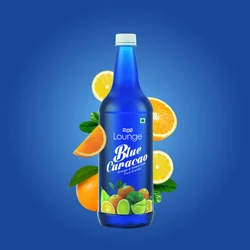Syrups can be used for a variety of purposes, ranging from sweetening drinks to adding flavor to desserts. To ensure consistency, quality, and safety, the manufacturing process for syrup includes several complex steps. This comprehensive guide will explore the manufacturing process step by step, from the sourcing of raw materials to the bottling of the final product. Fruit syrups manufacturers & suppliers play a vital role in delivering high-quality products to consumers around the globe.
1. Source Raw Materials
In order to manufacture syrup, the first step is to source high-quality ingredients. Sugar, water, flavors, acids and preservatives are the main ingredients in most syrups. The syrup is sweetened with sugar, usually in the form sucrose, which comes from sugar beet or cane. Citric acid, fruit extracts and natural or artificial flavors are also used to enhance the flavor and preserve the syrup.
2. Prepare the sugar solution
After sourcing the raw materials, the next stage is to prepare a sugar solution. The sugar is dissolved in water to form a base syrup. Sugar to water ratios vary depending on desired sweetness and final consistency. The solution is heated, and then stirred, until all the sugar has dissolved.
3. Flavorings and Acidification
After the sugar solution is prepared, acidifiers and flavorings are added to improve the taste and stability. To achieve the desired flavor, natural or artificial flavors such as vanilla or chocolate extracts are added to the sugar solution. Acids such as tartaric or citric acids can be added to the sugar solution to improve the shelf life of the syrup and prevent microbial growth.
4. Cooking with Concentration
After adding the acidifiers and flavorings, the mixture is cooked and concentrated. The syrup solution is heated to a certain temperature and maintained for a specified period. This cooking step serves a variety of purposes including reducing water content, caramelizing the sugars to develop color and flavor, and pasteurizing for microbial safety.
5. Filtration and Clarification
After cooking the mixture, it is filtered in order to remove impurities and solid particles. Filtration can be done with fine mesh screens, or by using filter presses. This will give you a smooth and clear consistency. Clarification agents can be added to improve the clarity of the syrup. This step is essential for improving the final product’s visual appeal and ensuring uniformity.
6. Cooling and packaging
After the syrup has been filtered and clarified it is brought to room temperature for packaging. The syrup is cooled quickly to preserve its freshness and flavor while preventing the formation of crystals. The syrup is transferred into clean, sterilized containers such as bottles and drums for storage and distribution. Packaging is crucial for maintaining the product’s quality and extending its shelf life.
7. Testing and Quality Control
As part of the manufacturing process, strict quality control measures ensure that the product meets the industry standards and regulatory requirements. Syrup samples are tested on various parameters, including sweetness, acidity and viscosity. A sensory evaluation is also conducted to evaluate the taste, smell, and appearance. To maintain consistency, any deviations are corrected.
8. Storage and Distribution
After packaging and testing for quality, the syrup must be stored in controlled conditions to maintain its stability and freshness. The right storage conditions are essential for maintaining the quality of syrup during transport and distribution. This includes controlling temperature and humidity. The product can be distributed to foodservice establishments or industrial clients depending on the type and demand of the syrup.
Conclusion
Syrup is made by following a set of steps that are precise and transforms raw materials into an incredibly tasty product. Each stage, from sourcing the raw materials to packaging of the final product is executed with care to ensure consistency, consumer satisfaction, and safety. Understanding the complex process of syrup production allows producers to create products that are superior and meet the needs of the food and beverage industries.
